I was reading in a woman's mag about the campaign to encourage more people to change over to veggie eating. I think the concept is called Flexitarianism, encouraging people who can't bear to give up their bacon sarnies and roast diners to consider baby steps to changing their habits. Paul McCartney's Meat free Mondays is an example of this concept.
What do you think are the easiest ways for pet owners to move to a more 'natural' diet without going the whole hog?
What's your handy hints for moving up scale to a better quality food without totally losing the convenience and the reassuring feeding instructions on the pack! Are any of you considering the leap so we can follow your progress?
Positive help to stop dog-on-dog attacks
10 years ago

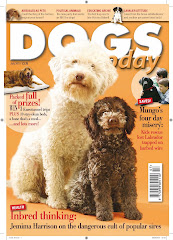
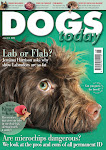
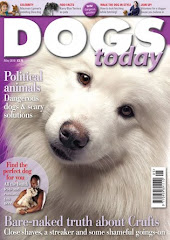
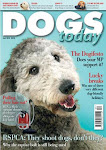
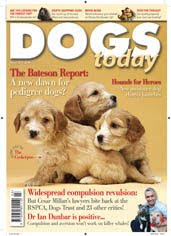

11 comments:
I'm in the middle of reading 'Give your Dog a Bone' by Ian Billinghurst.
What he's saying makes a lot of sense, and if I can find a good supplier I will change over when I've read everything.
From what he's saying, it's going to be better to change right over, competely. When I tried baby steps before (ie the odd bone or two from the butcher) it didn't work out. I didn't know I had to teach my small dog to chew bones and it was a painful lesson for him. So I'd rather know everything before I start this time!
How you can improve your dog's diet really depends on what you're feeding at the moment. So if it's a kibble, check the label, and why not try a higher protein, preferably grain-free one as a start. If you're feeding a really high quality kibble, consider replacing one meal a day with a good quality, additive-free wet feed like Naturediet or Natures Menu. These do contain rice, it's true, but not a huge amount.
If you want to take the step to raw, do your research first - there is masses of info available online. The thing that worries almost all first-time raw-feeders is feeding whole bones, so to start why not use some of the ready-minced meats that contain ground bone? There are raw minced feeds available with the correct balance of bone and offal to muscle meat; some even have veg added, though the jury is imo still out on the question of whether dogs actually need any vegetable matter at all. Gradually add in some meat on the bone - chicken wings, pork ribs, breast of lamb and so on.
A word of warning re raw feeding though - do go easy on the bone. Feeding too much bone can have very serious implications indeed. Think of a small animal that would be a dog's prey in the wild - a rabbit, say - and aim to feed to those proportions. I think a wild rabbit contains approx 12% bone; domesticated ones slightly less. Don't be tempted to feed much higher quantities than this - at the very least your dog could become severely constipated, and it really isn't necessary.
Small steps will get you there in the end!
my small step is to still use a portion of high quality kibble but only use either cooked fish or lamb at other times. No tinned foods or commercially prepared wet food in our house.
In reply to Anonymous's post above, I would like to add this.
I think it's best, when starting to feed a dog bones for the first time, not to chop them up or give them ground-up bones.
If a dog sees blobs of meat, for example, he might wolf it down without chewing it, not realising there are bones in it and this might cause problems.
I would start with chicken wings, and make it no more than two a day.
You could then move on to lamb ribs, for a change.
I hold out the wing in my hand and when the dog takes it, I hang on to it for a moment until the dog's jaws have clamped firmly onto it and he has realised there is something hard there that needs chewing.
It doesn't take long for them to get used to it and realise it must be chewed rather than eaten fast.
That very first bone, though, is worrying but once you realise that they can crunch them up like biscuits, you feel ok.
Ian Billinghurst is very keen on dogs not getting blocked internally, and the bowlful of ground up veggies mixed with other things such as cottage cheese, mince, is full of fibre, which helps push everything through.
I introduced my previous dog to the BARF diet when he was two years old.
My current dog, now 9 months, has been on it since I got her at 8 weeks.
Owners of puppies should note that there is a period of a few weeks, which coincides with teething, when they are unable to chew the bones and just suck the meat off.
A few weeks later, after the new teeth have come through, it's all back to usual.
I would always recommend reading Dr Billinghurst's books because there are several dos and don'ts which it is helpful to know.
Julia Lewis
Moving to a raw diet is sometimes very concerning to most pet owners and when you first read about BARF and raw meaty bones its sometime enough to put most people off.
The question most people want to answer is “ how do I know what I am feeding to my dog and how do I feed a fresher food ? “
By simply choosing the soft option of looking for a higher protein dry kibble you may be falling into the manufacturers “high value” trap of choosing the premium dry kibble because you think it contains some think better.
If you think this, you really should consider the actual ingredients and then access for yourself if what you want is actually a better diet based upon ingredients.
A raw diet with meat, bones, vegetables and grains we are told is how we should “ feed as nature intended” although it’s a big jump to take from from dry kibble.
Try to think about over processed foods such as kibbles and pre formed chunks in jelly or gravy and introduce a solid real meaty product such as Natures menu or Nature diet.
Both companies are UK manufactures using real meat with vegetables and rice in prepared diets.
This will allow you to make the first steps to a more natural diet and wean your dog off dry or heavily processed pet foods coated in fats and soaked in sugars for paletability.
From there you can introduce a pre minced BARF diet which you can now buy in most pet stores .. Natures menu are the leading brand in Europe and they produce complete BARF diets which are really convenient.
Try a day on natural prepared and then gradually a day on prepared BARF.
The results speak for them selves and the internet is full of converted dog owners now delighted to be feeding raw or natural.
In reply to Anonymous above, those blocks of raw, prepared BARF diet food are fine but they are very expensive compared to making up the stuff yourself.
Also, what about the bones? According to Ian Billinghurst, the bones are all important.
It's terribly easy to make up the minced veggie mixture and you can do a large quantity in one go, or even enough to freeze.
If you took a quantity of mince, say about a kilo, then you would grind up the equivalent amount of veggies. Mix the two together, add two raw eggs, a bit of cottage cheese, if you have any, a little oil, some raw liver or whatever.
Dr B does give the recipe in one of his books but it's up to you to ring the changes, which is the beauty of the diet, because you can include a wide range of things.
I give a bowlful of the mixture to my dog in the evening. At lunchtime she has two chicken wings.
Julia Lewis
Thanks for your BARF tips and for people who don't mind mixing up BARF diets at home your comments are fine.
Pre made BARF diets should cost around 74p per portion in most good pet shops which is great value compared to processed tins or even the nature products for people who want a one stop solution.
Try the UK BARF club on line as they deliver next day.
I have one foot firmly in both feeding camps.
I've moved to feeding an expensive so hopefully high quality complete dried food for one meal a day, and either bones or Nature's Menu complete raw for the other.
Reasons being
a) I am worried I will not be able to balance a diet, and the signs will not be seen for a few years until I have an irretrievably damaged dog
b) I don't have time to spend hours preparing food for myself let alone the dogs
c) when I go on holiday with a tent and no refrigeration I can just feed the dried food with none of the ill effects a drastic change of diet might provoke.
I have fed four dogs this way for about five years now, and they all do extremely well on it, and have nice poo!
Just to say that it is really important to consider the quality of the raw ingredients you are using. Some of the raw food sold in pet shops and online is of very poor quality. Also, one wants to be careful about feeding dogs the same thing every day. The idea is to achieve 'balance over time' - in other words give the dog all the nutrition it needs over weeks or months not in a single day. It is also good to fast your dog from time to time. Incidentally, I've helped to switch hundreds of dogs to a raw food diet and I've found that all but a tiny percentage of dogs will adapt in a single day. Anyway, back to my main point. Decent quality meat is expensive and anything cheap is bound to be of poor quality and from factory farmed animals.
I have been feeding a raw diet to my two dogs (one aged 3 years and the other aged 12 years) for a few weeks now. I am buying chicken wings and chicken leg quarters from the supermarket (at a very reasonable price) and the following (frozen) 'Prize Choice' products from the UK Barf Club (as mentioned above): lamb mince, rabbit mince, tripe chunks, heart chunks, liver chunks and white fish chunks. I intend to begin preparing vegetables etc myself, but have started off by feeding 'Natures Menu' fruit and vegetable nuggets - also available by mail order. I discovered that completely changing the type of meat I fed my dogs from one day to the next resulted in loose stools or diarrhoea. However, this problem is avoided when chicken makes up half of their meal each day. I am also giving a scrambled egg to each dog twice a week, and hope to include oily fish in their diet too. Despite being vegetarian, I find it very satisifying to hear Monkey and Misty crunching through raw chicken bones!!
I have been unable to switch over fully to a raw diet mainly due to difficulties in obtaining the variety of raw food I would like to feed, as well as confusion over which raw foods are fine, and which need to frozen for a certain length of time.
I can get chicken, lamb, liver etc from local supermarkets. Our one butcher was absolutley useless so I won't be going there again. I can't really buy on line as my freezer is full and it seems all the food in the local pet shop comes in large frozen lumps which my little JRT would never get through. I still feed wet (Natures Menu or JWB) and dry (Orijen or Arden Grange) food every day as well but she never eats it unless she's starving.
I found Ginny needed no help with her first chicken bone and now at eight months eats wings, drumsticks and thighs with relish. She loves liver too, but of course I have to restrict that.
I'd love to give her rabbit etc but no idea where to get that from.
In any case, she's doing very well on her half raw diet and everyone says what a lovely coat she has.
I would love it if there were more UK written books rather than US or Australian ones. Not much chance of me getting kangaroo!
Post a Comment